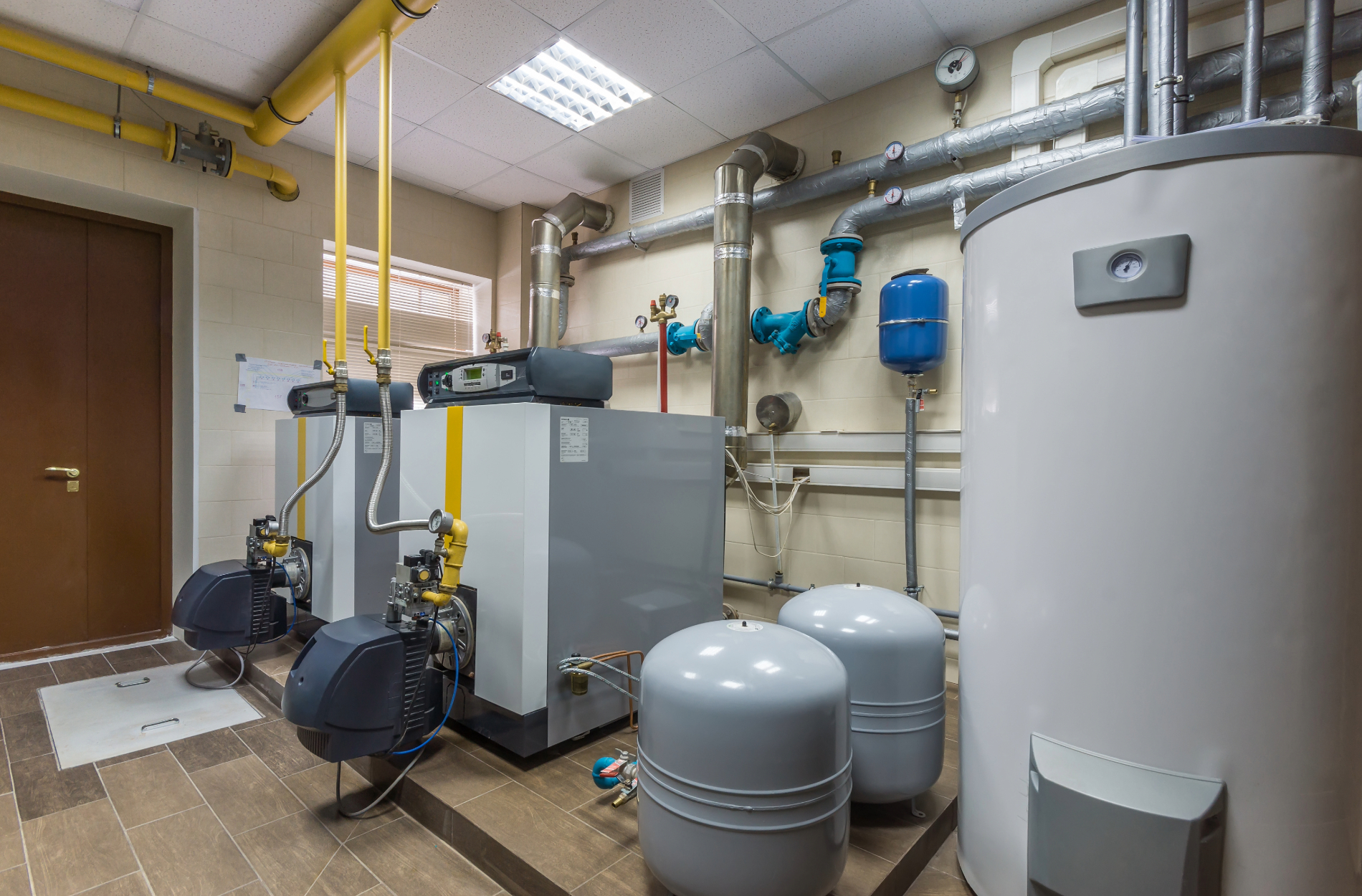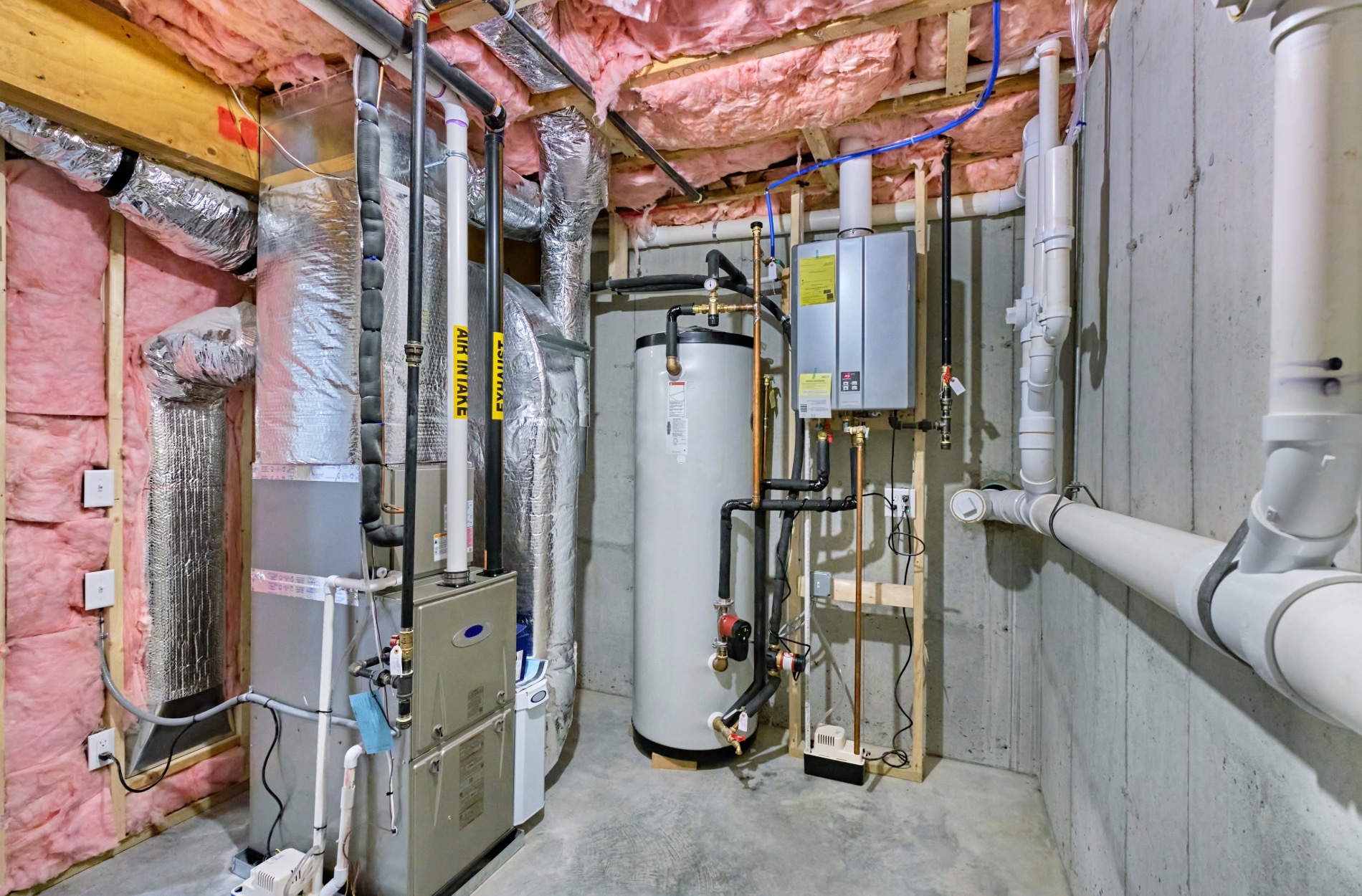Businesses rely heavily on their heating systems to maintain a comfortable and productive environment for employees and customers. When a furnace malfunctions, it can lead to discomfort, decreased productivity, and even potential safety hazards. Understanding the common issues requiring furnace repair and how our professionals address them is crucial for maintaining a reliable and efficient heating system.
Common Issues Requiring Furnace Repair for Businesses
Commercial furnaces can face several common issues that require prompt attention to ensure the system runs smoothly and efficiently. Here are some of the most frequent problems that our technicians encounter:
Inconsistent Heating
Uneven heating is a prevalent issue in many commercial buildings. Certain areas may feel too hot while others remain cold. This problem can result from clogged air filters, poorly designed ductwork, or issues with the thermostat. Regular inspections and maintenance can help prevent this issue from escalating.
Strange Noises
Unusual noises such as banging, squealing, or rattling often indicate mechanical problems within the furnace. These sounds could be due to loose components, motor issues, or problems with the blower assembly. Our professionals are trained to diagnose and fix these issues efficiently.
Frequent Cycling
When a furnace turns on and off too frequently, it’s known as short cycling. This condition can be caused by an oversized furnace, a clogged air filter, or a malfunctioning thermostat. Short cycling not only impacts comfort but also reduces the system’s lifespan due to increased wear and tear.
Pilot Light or Ignition Problems
A pilot light that won’t stay lit or issues with the ignition system can prevent the furnace from producing heat. These problems can stem from a faulty thermocouple, dirty burners, or gas supply issues. Prompt attention and repair are crucial to restore proper furnace function.
The Diagnostic Process Our Professionals Use
Accurate diagnosis is the first step towards effective furnace repair. Our technicians follow a structured approach to identify and address the root cause of the problem.
Initial Assessment
Our professionals begin with an initial assessment to understand the symptoms the system is exhibiting. This involves talking to the client to gather information about any irregularities they’ve observed, such as unusual noises, inconsistent heating, or sudden increases in energy bills.
Visual Inspection
Next, our technicians conduct a thorough visual inspection of the furnace and its components. They check for visible signs of wear and tear, corrosion, or damage to parts like the heat exchanger, blower motor, and ductwork. This step helps identify any obvious issues that need immediate attention.
System Testing
After the visual inspection, our professionals test the furnace’s various functions. This includes checking the thermostat settings, measuring airflow, and assessing the ignition system. They also use specialized tools to measure electrical currents and gas pressure to ensure everything operates within safe parameters.
Identifying the Root Cause
Using the data collected from the assessment, inspection, and testing, our technicians pinpoint the root cause of the furnace issue. Whether it’s a minor component failure or a more complex mechanical problem, accurate diagnosis is crucial for effective repair.
By following this thorough diagnostic process, our professionals ensure that they correctly identify the issue and provide a targeted solution. This meticulous approach helps in restoring the furnace to full functionality and preventing future problems.
Detailed Repair Procedures: What to Expect
When it comes to furnace repair, understanding the detailed procedures can help clients know what to expect. Our professionals follow a systematic approach to ensure effective and reliable repairs.
Safety First
Safety is a top priority during furnace repairs. Before starting any work, our technicians turn off the power and gas supply to prevent accidents. They wear protective gear and take necessary precautions to safeguard the work area.
Component Repair or Replacement
After diagnosing the issue, our professionals determine whether repair or replacement of specific components is needed. Common repairs include:
– Replacing Air Filters: Clogged filters are swapped out to improve airflow and system efficiency.
– Fixing the Ignition System: Our technicians repair or replace faulty ignition components to ensure the furnace lights properly.
– Repairing the Blower Motor: Issues with the blower motor or fan are addressed to restore proper air circulation.
– Sealing Duct Leaks: Leaky ductwork is sealed to prevent heat loss and improve efficiency.
If a component is beyond repair, a replacement is carried out to restore the furnace’s functionality.
Final Testing
Once the repairs are completed, our technicians conduct a series of tests to ensure that the furnace operates correctly. They check for proper ignition, consistent airflow, and accurate temperature regulation. Adjustments are made as needed to optimize performance.
Clean-Up and Client Briefing
After the final testing, our professionals clean the work area. They also provide a detailed briefing to the client, explaining the repairs performed and any recommendations for future maintenance. This helps clients understand the work done and empowers them to maintain their furnace effectively.
Ensuring Long-Term Furnace Health After Repair
Keeping your furnace in peak condition after repairs involves regular maintenance and timely interventions. Here’s how to ensure long-term health for your heating system.
Schedule Regular Maintenance
Routine maintenance is essential for preventing problems and extending the furnace’s lifespan. Regular inspections by our professionals can identify minor issues before they escalate. Scheduled maintenance tasks include:
– Changing Air Filters: Regularly replacing filters prevents clogs and maintains good airflow.
– Cleaning Ducts: Periodic duct cleaning ensures efficient air circulation and reduces dust buildup.
– Checking Thermostat Settings: Ensuring the thermostat is correctly calibrated for consistent temperature control.
Monitor System Performance
Keep an eye on the furnace’s performance and watch for signs of trouble. Unusual noises, uneven heating, or increased energy bills can indicate underlying issues. Prompt attention to these signs can prevent major repairs and keep the system running smoothly.
Plan Ahead for Replacement
Even with the best maintenance, furnaces have a finite lifespan. Planning for future furnace replacement can save time and money in the long run. Consider factors such as the age of the furnace, frequent breakdowns, and rising energy costs when deciding to replace the unit.
Partner with Trusted Professionals
Partnering with a trusted heating contractor ensures your furnace receives expert care. Our professionals provide comprehensive services, from installation to repair and maintenance, ensuring your heating system remains reliable and efficient.
Conclusion
Understanding the common issues, diagnostic process, detailed repair procedures, and maintenance practices for commercial furnaces is crucial for business owners. By following a systematic approach, our professionals ensure efficient and reliable furnace repair, helping maintain a comfortable environment for your employees and customers.
Regular maintenance and timely repairs are essential for extending the life of your furnace and avoiding costly breakdowns. Partnering with our team at Home Energy Group Inc guarantees expert care for your heating system, ensuring optimal performance and longevity.
For reliable and efficient furnace repair services in Battle Ground, WA, contact us today. Our skilled professionals are here to help you maintain a comfortable and productive environment.








